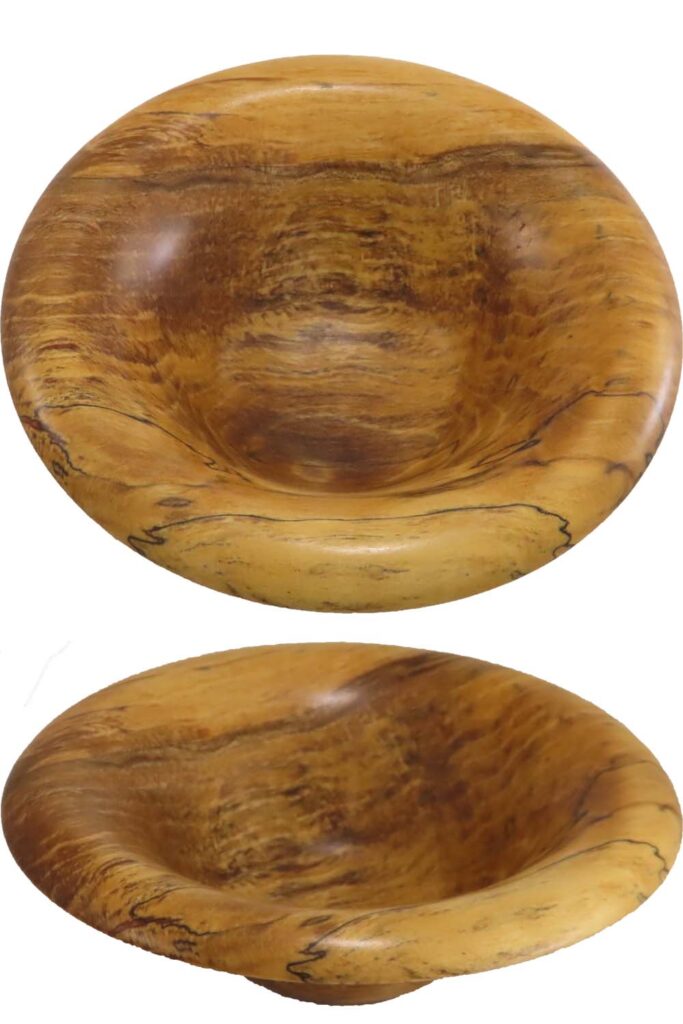Stabilization To The Rescue For Severely Spalted Bowl
by Alan Stratton on Friday, July 26th, 2024 | 6 Comments
Please continue to view this post on this page. However, if technical difficulties occur, it is also posted on YouTube and FaceBook.
I received this wood in a club wood exchange. On examining it, I noted some great spalting color and figure. But also noted a lot of very soft punky wood. I can treat small amounts of punky wood with CA glue. But this had a lot.
I rough turned it. Dried it in an over. Then stabilized it by soaking it in Cactus Juice, a heat activated resin under vacuum for about two days. Then let it soak for another two days before hardening the resin in the oven.
Then I could finish turn the bowl much like a remounted green turning
My bowl is 6 by 2 inches finished with wipe-on poly.
Enjoy.

Hi Alan, I thought you knew everything about wood and turning. Well, I have stabilized a lot of pen blanks when I started turning pens back in 2019. You need to weigh the rough blank before you put it in the oven and then check it every 3 to 4 hours and weigh each time until it will does not lose any more weight. Then you know you have all the moisture out. The oven needs to be at about 220 degrees F because water boils at 212 and that’s what gets the moisture out. You should let it soak twice as long as the vacuum time before you cure in oven at 200 degrees F. This stabilizing process works great for a lot of soft wood making it harder and easier to turn and finish. Love you videos every week. Thanks so much and God Bless!
Thanks for the tips. Always want to learn from others.
Just one thing. Here in Utah at 4000 feet plus, water boils much lower. But your points are still great.
Alan
Alan I have started to use the Cactus juice. When I put sanding sealler on it, I get sticky spots. Also, I have gotten some sticky spots using wipe on poly.
What experience have you had and what have you had the best luck with?
🙂 Steve Patzman
I’ve not experienced either although I haven’t used sanding sealer on a turned project for years.
I will watch for it.
The only thing I’ve observed with wipe-on poly is that I need to let the first coat dry most of a summer day. I think because it does soak into wood-it is somewhat sticky for longer. Subsequent coats dry much more quickly.
Alan
Hi Allan. First: I enjoy your weekly updates very much – thanks for the inspiration.
I have a little experience with punky wood.
First trial was a small piece of beech which I had passed by one or two years thinking it was too rotten, but ended up taking it home and let it dry during the summer before rough turning down to 2,5 cm before soaking it with resine thinned with acetone (1 resine to 4-5 parts acetone before final turning.
No problems turning a bowl 25*12 cm vith wall 5 mm.
Happy that it turned out great.
Alan